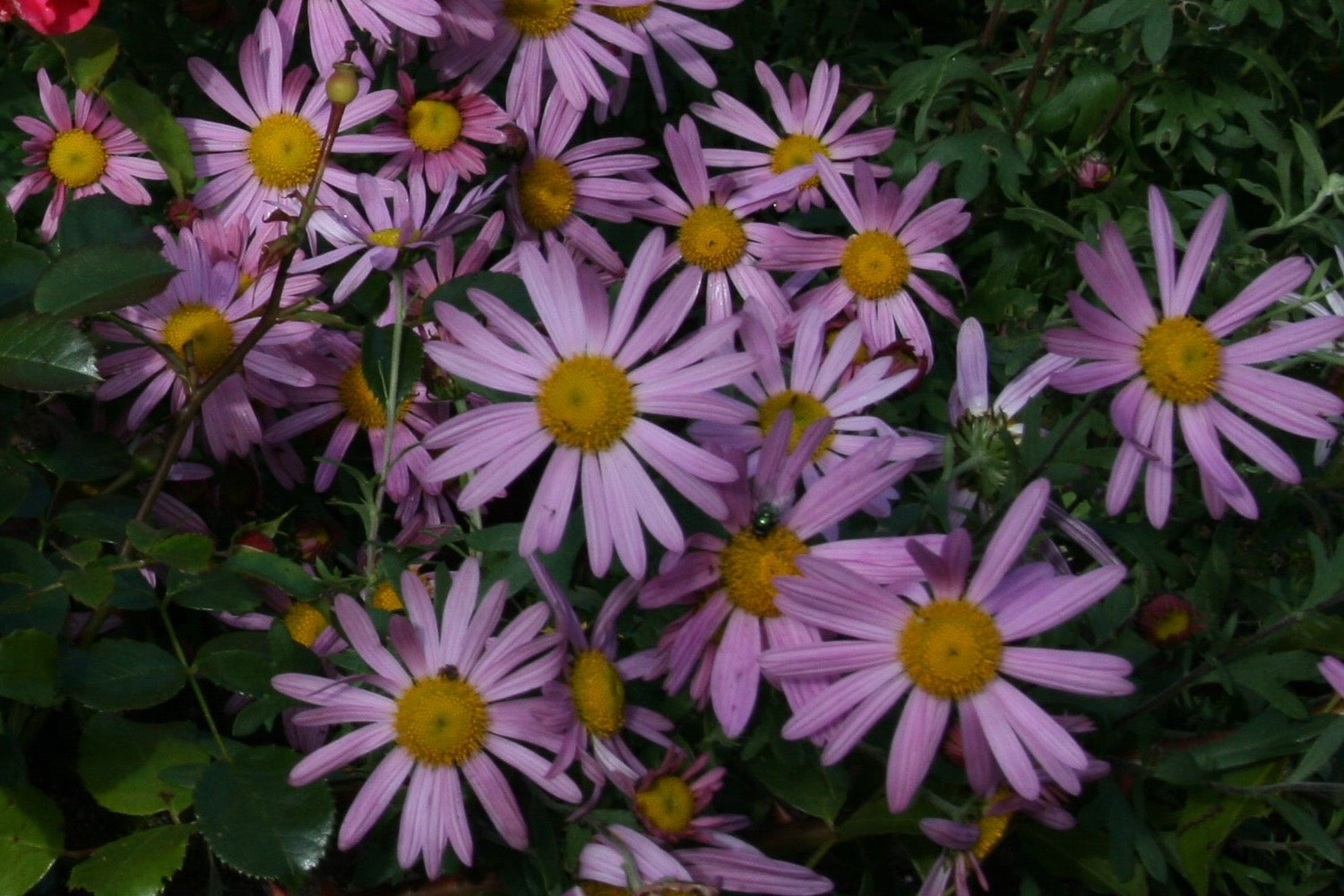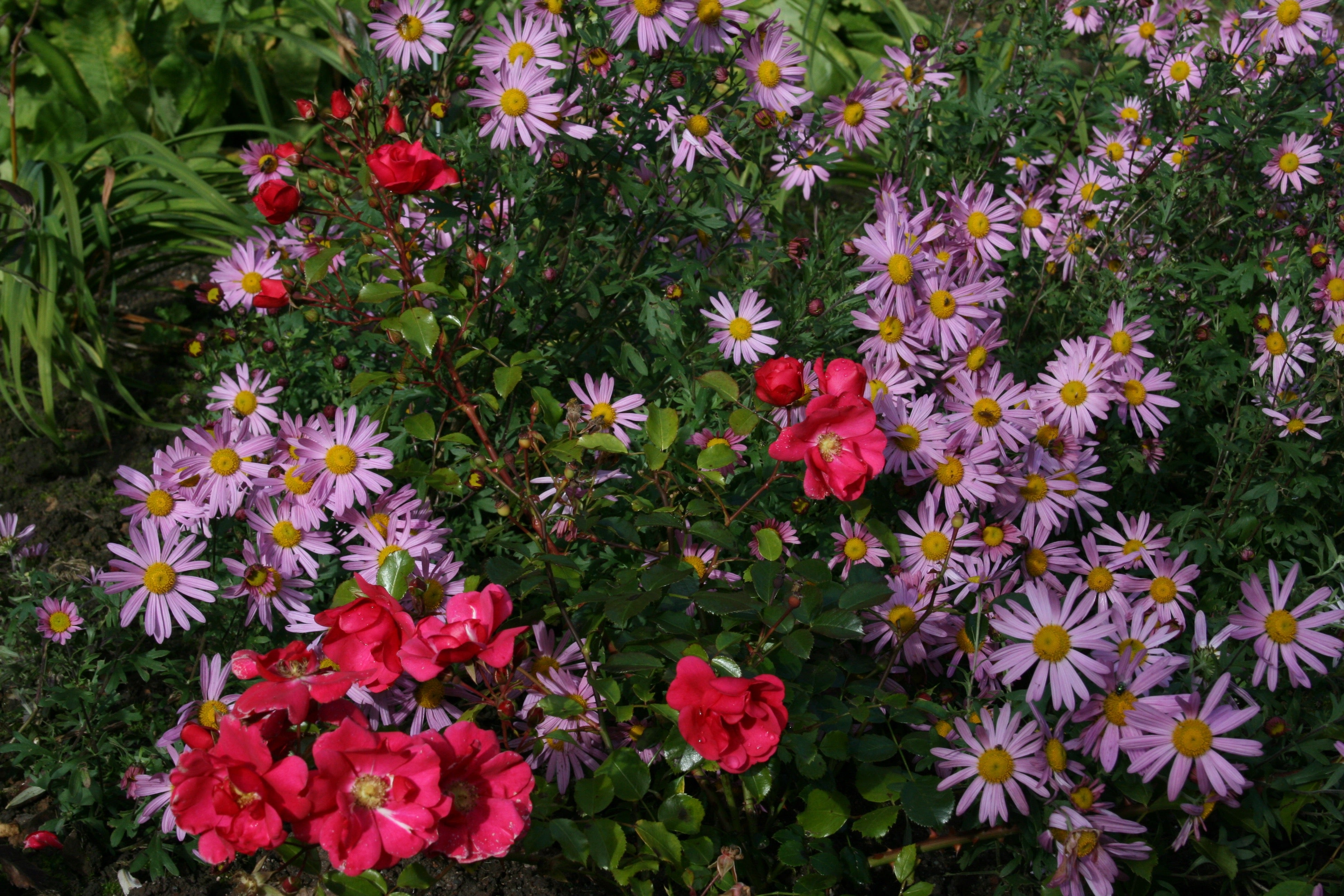Chrysanthemum 'Clara Curtis' (21d)
Approx. 0.5 litre pot
About this cultivar:
Chrysanthemum 'Clara Curtis' (21d) is a single, daisy-like, mid-pink flower, that was the first of Amos Perry's "rubellum hybrids", released in 1939 and still one of the most popular garden chrysanthemums today. Mr Perry was using the name Rubellum as a Trade Name, nowadays we use 21d which the RHS has, under its classification of genera, as 'Korean: Single'. I think 21d doesn't quite have the market potential that Mr Perry was looking for.
- Position: Full sun, partial shade
- Soil: Almost any soil, grows well in Ballyrobert
- Flowers: September, October, November
- Other features: Grows well in Ballyrobert
- Hardiness: H5 - Hardy in most places throughout the UK even in severe winters (-15 to -10°C), Fully hardy - grows well in Ballyrobert!
- Habit: Bushy, Clump forming
- Foliage: Deciduous
- Height: 45 - 75 cm (1 - 2 ft)
- Spread: 30 - 60 cm (1 - 2 ft)
- Time to full growth: 2 to 5 years
- Plant type: Herbaceous Perennial
- Colour: Red, pink, orange, yellow, green
-
Goes well with: Swathes. Try with Geranium.
About this genus:
Chrysanthemums, sometimes called mums or chrysanths, are flowering plants of the genus Chrysanthemum in the daisy family (Asteraceae). They are native to Asia and northeastern Europe. Most species originate from East Asia and the center of diversity is in China. There are about 40 valid species, however there are countless horticultural varieties and cultivars!
The genus name "chrysanthemum" is derived from the Greek words chrysos (gold) and anthemon (flower). The genus once included more species, but was split several decades ago into several genera, putting the economically important florist's chrysanthemums in the genus Dendranthema. The naming of the genera has been contentious, but a 1999 ruling of the International Botanical Congress( Bond Villains or what!?) changed the defining species of the genus to Chrysanthemum indicum, restoring the florist's chrysanthemums to the genus Chrysanthemum.
Chrysanthemums were first cultivated in China as a flowering herb as far back as the 15th century BC.Over 500 cultivars had been recorded by the year 1630! The Japanese Emperor adopted the flower as his official seal where the "Festival of Happiness" celebrates the flower.
Chrysanthemum prefers full sun but will tolerate part shade. Soil wise - anythign that isn't a pond or desert should be fine. When happy, chrysanthemum may spread via rhizomes to form a large patch. The beautiful flowers are bee and butterfly magnets.
Chrysanthemum plants look great in pots, in a formal or informal perennial border, on slopes, or massed together as a groundcover. Their tight formal habit means that chrysanthemum pairs well with clump-forming ornamental grasses, and other plants with a similar habit. I like them with Geranium or in large patches by themselves. Few plants are capable of flowering so well in the second half of October and often into November.




